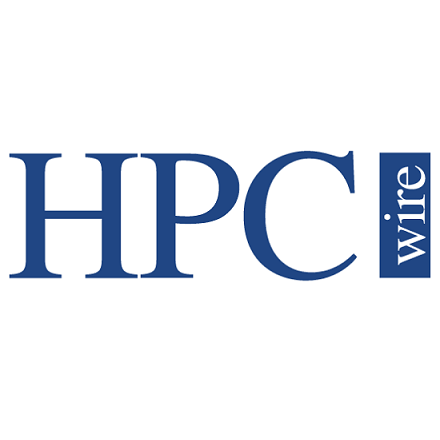
AMD Brings New 16-Core Opterons to Market
November 5, 2012
Chipmaker unveils Opteron 6300 series -- same core count, more performance. Read more…

AMD Unveils 64-Bit ARM Strategy
November 1, 2012
On Monday, AMD announced it is adding ARM-based Opterons to its portfolio, the first non-x86 server chips in the company's history. The new processors, due out in 2014, will use 64-bit ARM SoCs on top of its SeaMicro Freedom Fabric technology, and will be aimed at the datacenter and cloud space. Read more…

Dell Develops Second ARM Server Platform
October 30, 2012
Dell hands over its Calxeda ARM-based server platform to the Apache community. Read more…

Penguin Joins Microserver ARMs Race
October 18, 2012
Penguin Computing has launched its first ARM-based server platform. Known as the UDX1, the Penguin box is based on Calxeda's latest ARM server chip, and is aimed at cloud computing, Web hosting, and, especially, data analytics – UD stands for Ultimate Data. The move puts Penguin into the front ranks of computer makers who are testing the waters for the burgeoning microserver market. Read more…

Dell Announces Servers That Will Power Stampede Supercomputer
September 19, 2012
Dell has launched a new line of servers aimed at "hyperscale" server setups. The PowerEdge C8000 series encompasses a shared infrastructure chassis that can mix and match three different flavors of servers: vanilla x86 CPU, coprocessor-accelerated, and high density storage. The new offering will be the basis for Stampede, the 10-petaflop supercomputer being built this year at The Texas Advanced Computing Center (TACC). Read more…

AMD Offers Five Petabytes of Freedom
September 11, 2012
SeaMicro division launches new line of microservers aimed at data-intensive applications. Read more…

HP, Intel Score Petaflop Supercomputer at DOE Lab
September 5, 2012
The US Department of Energy's National Renewable Energy Laboratory (NREL) has ordered a $10 million HP supercomputer equipped with the latest Intel Xeon CPUs and Xeon Phi coprocessors. When completed in 2013, the system will deliver one petaflop of performance and will take up residence in one of the most energy-efficient datacenters in the world. Read more…

Calxeda Takes Aim at Big Data HPC with ARM Server Chip
May 31, 2012
With Dell's news this week of its renewed plans to bring ARM-based servers to datacenters and Intel's recent unveiling of new Xeon CPUs aimed at ultra-low-power servers, the "microserver" marketplace is being primed for some commercial offerings. Chip startup Calxeda has been working to bring its own ARM-based SoC technology into the datacenter and, with the help of its OEM partners, the company is positioning the technology for its commercial debut. Read more…

- Click Here for More Headlines

Whitepaper
Transforming Industrial and Automotive Manufacturing
In this era, expansion in digital infrastructure capacity is inevitable. Parallel to this, climate change consciousness is also rising, making sustainability a mandatory part of the organization’s functioning. As computing workloads such as AI and HPC continue to surge, so does the energy consumption, posing environmental woes. IT departments within organizations have a crucial role in combating this challenge. They can significantly drive sustainable practices by influencing newer technologies and process adoption that aid in mitigating the effects of climate change.
While buying more sustainable IT solutions is an option, partnering with IT solutions providers, such and Lenovo and Intel, who are committed to sustainability and aiding customers in executing sustainability strategies is likely to be more impactful.
Learn how Lenovo and Intel, through their partnership, are strongly positioned to address this need with their innovations driving energy efficiency and environmental stewardship.
Download Now
Sponsored by Lenovo
Whitepaper
How Direct Liquid Cooling Improves Data Center Energy Efficiency
Data centers are experiencing increasing power consumption, space constraints and cooling demands due to the unprecedented computing power required by today’s chips and servers. HVAC cooling systems consume approximately 40% of a data center’s electricity. These systems traditionally use air conditioning, air handling and fans to cool the data center facility and IT equipment, ultimately resulting in high energy consumption and high carbon emissions. Data centers are moving to direct liquid cooled (DLC) systems to improve cooling efficiency thus lowering their PUE, operating expenses (OPEX) and carbon footprint.
This paper describes how CoolIT Systems (CoolIT) meets the need for improved energy efficiency in data centers and includes case studies that show how CoolIT’s DLC solutions improve energy efficiency, increase rack density, lower OPEX, and enable sustainability programs. CoolIT is the global market and innovation leader in scalable DLC solutions for the world’s most demanding computing environments. CoolIT’s end-to-end solutions meet the rising demand in cooling and the rising demand for energy efficiency.
Download Now
Sponsored by CoolIT
Advanced Scale Career Development & Workforce Enhancement Center
Featured Advanced Scale Jobs:
HPCwire Resource Library
HPCwire Product Showcase
© 2024 HPCwire. All Rights Reserved. A Tabor Communications Publication
HPCwire is a registered trademark of Tabor Communications, Inc. Use of this site is governed by our Terms of Use and Privacy Policy.
Reproduction in whole or in part in any form or medium without express written permission of Tabor Communications, Inc. is prohibited.
























